Pin to Win: Boosting Social Media Marketing and Multifamily SEO One Board at a Time
In today’s digital age, traditional methods of finding multifamily properties, like scouring the classified sections of newspapers or searching through Craigslist, have taken a backseat. The spotlight now is on dynamic and interactive platforms for social media marketing, and Pinterest is leading the charge as an unexpected yet potent tool.
For those still unfamiliar with this platform, Pinterest is much more than just another image-sharing site. It is a powerful repository of visual inspirations and ideas, neatly organized into “Boards.” Unlike many other platforms, it’s a place where users don’t just scroll and like; they engage, plan, and dream. This unique behavior makes Pinterest a compelling channel for social media marketing, particularly for multifamily properties.
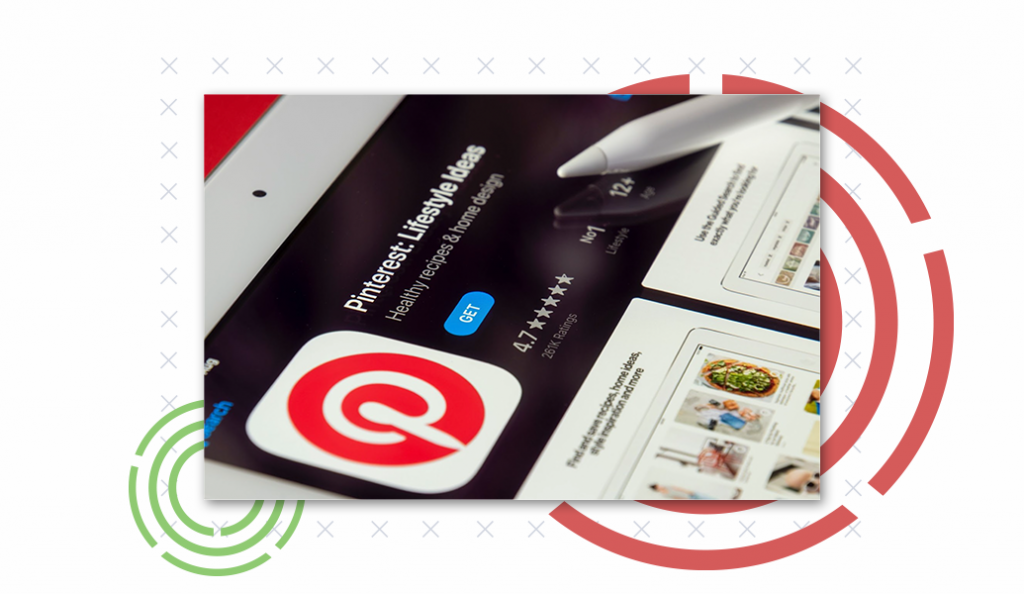
Pinterest and Its Influence on Multifamily SEO
For multifamily property marketers, the crux lies in ensuring that your property website ranks high in search engine results. High multifamily SEO ranking translates to increased traffic, more leads, and a bolstered brand reputation. Here’s where Pinterest comes into play, acting as an unexpected booster for multifamily SEO.
Let’s explore how:
1. Setting Up Your Pinterest Profile
Your first step in Pinterest marketing is creating an account representing your business. Use your full business name and ensure that your Pinterest bio gives an immediate sense of who you are, complete with logos and essential contact details. Remember, a Pinterest marketing agency would stress the importance of consistency across platforms.
2. Board Creation and Management
Think of boards as visual chapters of a book. While the temptation is to create many, quality trumps quantity. A handful of well-curated boards can do wonders for your Pinterest marketing strategy.
Categories to consider include:
- Showcasing your property: Highlight rooms, amenities, and events.
- Tips and advice: From interior decoration ideas to space-saving hacks.
- Local guides: Offer insights into the neighborhood and local attractions.
- Lifestyle: Share easy recipes or DIYs for apartment living.
3. Harnessing Multifamily SEO
Keywords are the pillars of any SEO strategy, and Pinterest marketing is no different. Integrate relevant multifamily SEO keywords into your Pins’ titles and descriptions. This ensures search engines recognize the relevancy of your Pins, propelling them (and your property) to a wider audience.

4. Steering Potential Renters Your Way
Every Pin should serve a purpose, and in the case of multifamily properties, it guides interested parties back to your main website. Edit the source link of your Pin to ensure it leads back to your site. An engaging caption can further tempt users to make that all-important click.
Bringing Pinterest Into Your Social Media Marketing Fold
With its visually-driven platform and engaged user base, Pinterest offers multifamily properties a unique avenue for social media marketing. Collaborating with a Pinterest marketing agency can further refine your strategy, ensuring you harness the platform’s full potential.
As the digital landscape evolves, staying adaptive and innovative is vital. And, in the realm of social media marketing, Pinterest might just be the secret ingredient you’ve been looking for to elevate your multifamily SEO. So, why wait? Dive in and pin your way to success!
How to Launch Threads: Exploring the Next Frontier in Social Media Interactions
In the dynamic world of social media, new platforms continually emerge, aiming to redefine how we connect and interact. One such platform that has garnered significant attention is Threads.
Launched on Wednesday, July 5, 2023, Threads offers a fresh approach to social networking, focusing on fostering meaningful conversations and intimate group interactions.
Facebook has tried to compete with Twitter for years, including copying signature Twitter features such as trending topics and hashtags. But now Meta is taking a swipe at Twitter with this new platform.

Threads is intended to offer a space for real-time conversations — something that has long been a core selling point of Twitter.
The app has garnered 100 million active users (and counting) as of July 2023.
So, is Threads worth it? Should we dive into yet another social media platform? And how do you use it properly?
Introducing Threads: Redefining Social Connections
Threads is a social platform designed to create focused and intimate conversation spaces. It differs from traditional social media platforms by emphasizing privacy, close-knit groups, and meaningful interactions. With Threads, users can connect with friends, family, and communities more personally and engagingly, enhancing the quality of their social interactions.
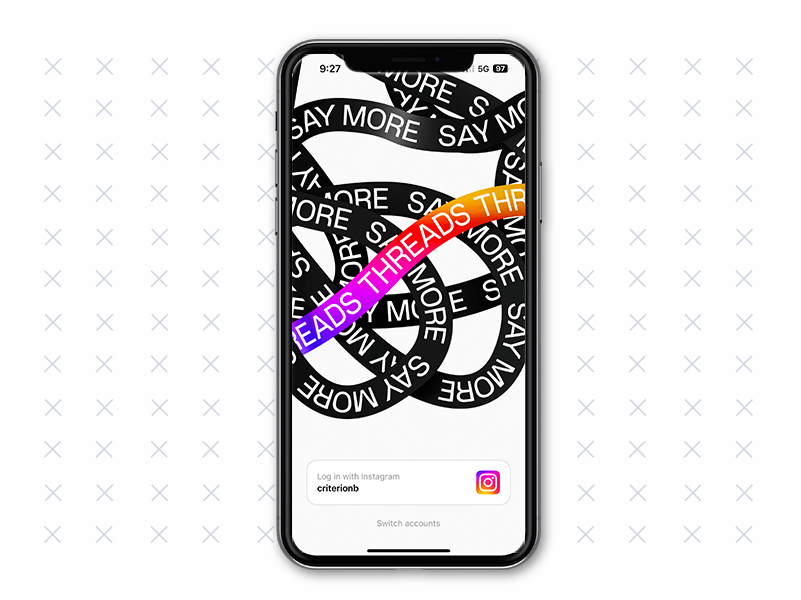
Businesses can engage with their customers in real-time offering answers to important FAQs, customer support, and more personalized responses — similar to Twitter. Since its launch, Threads has gained momentum, attracting users who enjoy platforms like Twitter but seek change.
Getting Started With Threads
How to launch a Threads account
Joining threads is an extremely simple process — all you need is an Instagram account and the app! To join Threads, you need to download the mobile app on iOS and Android devices. You can also scan the QR code on the Threads website, redirecting you to App Store.
Once downloaded, follow the simple registration process to create your Threads account. You will then be directed to a screen where you can set up your profile. If you manage multiple business accounts, be sure to sign into the account you want to launch on Threads.
Please note that your name on Threads is automatically synced with your Instagram account and cannot be edited. You can manually add a profile photo, link, and bio or utilize the convenient “Import from Instagram” feature, which seamlessly transfers your existing details, including your profile picture, from your Instagram account.
Next, you can choose between a Public or Private account setting. Opting for a Private profile ensures that only approved followers can view and engage with your posts. It’s important to note that your choice on Threads does not impact your Instagram profile. You can maintain a private profile on one platform while having a public profile on the other, providing flexibility in managing your online presence.
After selecting, you will be presented with a list of Instagram accounts you currently follow. At this point, you can choose to follow all accounts on Threads or manually select specific ones. If you choose to follow an account that has not yet joined Threads, they will be automatically followed if they sign up later.
How to build your following on Threads
One burning question we hear is, “Can I import my Instagram followers on Threads?” Threads does not currently offer a built-in feature to import followers from other social media platforms or external sources. However, they can follow you when they join Threads.
You can also promote your Threads profile on other platforms or to your existing followers through various means, such as sharing your Threads username, posting about it on your social media accounts, or including it in your website or email signatures. This can encourage your existing audience to join you on Threads and potentially become your followers on the platform.
It’s important to note that the availability of features and functionalities on social media platforms may evolve. Therefore, it’s always a good idea to stay updated with Threads’ latest announcements, updates, and documentation to learn about any new features or possibilities, including the ability to import followers in the future.
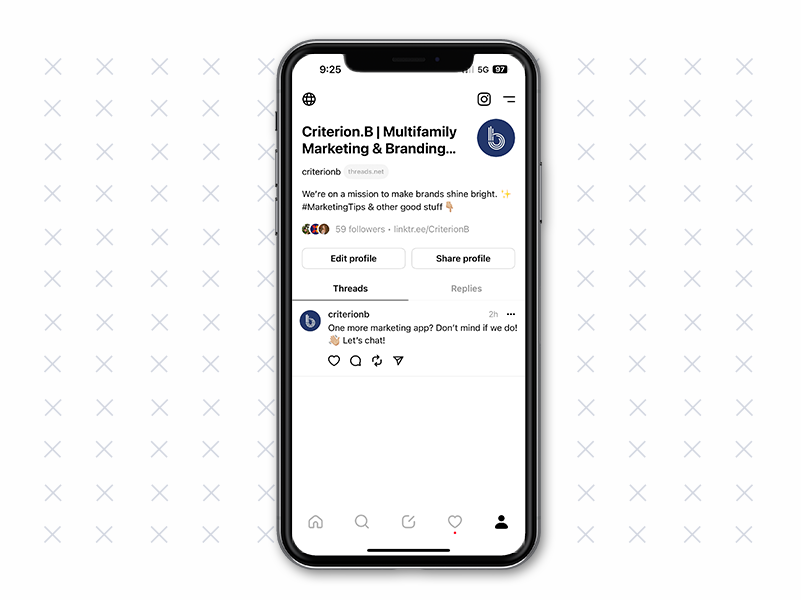
How to post on Threads
To post on Threads, follow these simple steps:
- Launch the Threads App: Open the Threads app on your iOS or Android device. If you haven’t downloaded the app yet, you can find it in the respective app store for your device.
- Log in to Your Account: Enter your login credentials to access your Threads account. If you are a new user, you can sign up for an account following the app’s registration process.
- Explore or Create Threads: Once you are logged in, you have two options: explore existing threads or create your own. To explore threads, you can browse through different categories or search for specific topics or communities of interest. Join threads that capture your attention and align with your preferences.
- Contribute to Threads: To make a post within a thread, navigate to the specific thread where you want to share your thoughts or media. Look for the option to create a new post or participate in an ongoing discussion.
- Craft Your Post: Depending on the capabilities of the Threads app, you will typically have options to type out text, upload images, videos, or share links. Use the available tools and features to create your post, ensuring it aligns with the thread’s topic and intended purpose.
- Engage With the Community: After crafting your post, take a moment to review it for clarity, relevance, and appropriateness. Once you are satisfied, submit your post within the thread. Your contribution will become visible to other participants, who can respond and converse with you.
- Respond to Replies and Interact: As other users respond to your post, be sure to engage with them by replying to comments, sharing further insights, or asking follow-up questions. Threads are meant to foster meaningful discussions, so active participation and interaction contribute to a vibrant and engaging community experience.
- Follow Thread Guidelines: Like Instagram, remember to adhere to the community and thread-specific rules. Respect the privacy and preferences of other participants, maintaining a friendly and constructive environment for conversations.
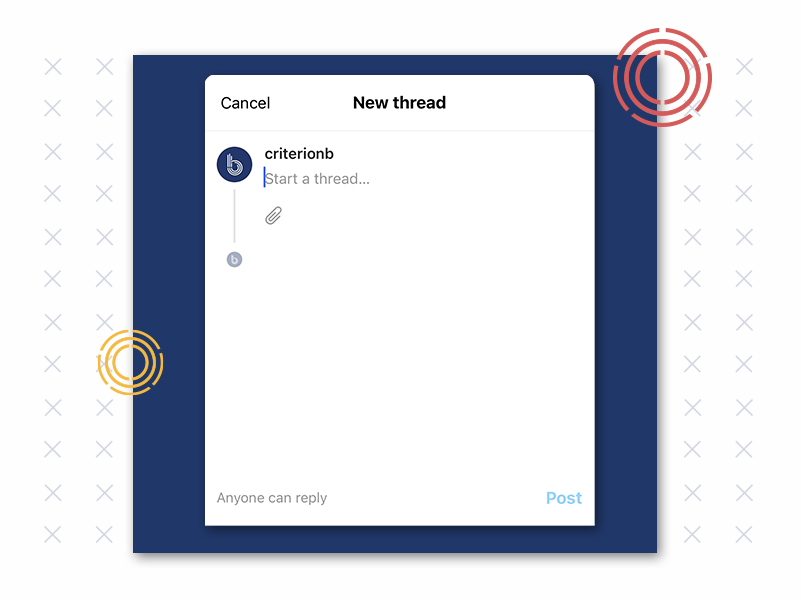
FAQs: Answering Your Burning Questions About Threads
Q1: Is Threads a public platform?
No, Threads is designed to prioritize privacy and close-knit interactions. Users can control who can join their threads and access their conversations, allowing for a more intimate social experience.
Q2: Can I use Threads to connect with existing friends?
Absolutely! Threads provides an opportunity to deepen your connections with existing friends by engaging in focused and meaningful conversations. You can create private threads exclusively for your close group of friends or join threads initiated by others.
Q3: Are communities available on Threads?
Threads allows users to discover and join communities that match their interests. Communities unite like-minded individuals, fostering discussions and connections around specific topics or hobbies.
Q4: Can I share media files on Threads?
Yes, Threads supports sharing various media formats, including photos, videos, and links. This enhances the visual and interactive aspects of conversations within threads, making interactions more engaging and dynamic.
Q5: How does Threads prioritize user privacy?
Threads prioritizes user privacy by providing control over who can access conversations. Users have the ability to create private threads, invite specific individuals, and manage their thread settings to ensure a secure and trusted environment for communication.
Q6: Can I schedule posts in advance?
No. Currently, the platform is all app-based, and you can only post manually. We assume this will change very soon as Meta incorporates it into the Meta business platform.
Q7: Can I edit a Thread I’ve already posted?
Not yet. However, you can limit who can reply to your post or hide the number of likes even after you’ve shared a post.
Q8: Can you use hashtags on Threads?
Threads doesn’t support hashtags yet. There is no point in including them in your caption and wasting your character count (as of now).
Q9: How do I repost a Thread?
If you want to repost the content, click on the double arrow icon below the post, which is the same as the retweet icon on Twitter.
Q10: Can you manage multiple accounts on Threads?
Threads only allows you to log in with a single account at a time. You can switch profiles only by logging out of the current Thread account.
The Future of Threads: Is It Here to Stay?
Threads’ popularity and evolution presents exciting opportunities for individuals, communities, and businesses alike. But is it here to stay? Will it take off or flop after a year? Only time will tell. But we are here with you to help navigate this new platform and explore all the multifamily marketing opportunities it provides!
As Threads continues to evolve, it has the potential to reshape the social media landscape. Could it be the undoing of Twitter? Will Twitter still reign supreme? Only time will tell…
The Do’s and Don’ts of Social Media Interaction
Long gone are the days of stranger danger. Well, at least that’s true if you’re doing social media for multifamily. Nowadays, it is common — and almost expected — for an organization to interact with its customers, employees, and community online.
Multifamily professionals must engage and connect with their audience online to establish an authentic and interactive brand presence.

While social media for multifamily is an excellent tool for building your brand, it is essential to follow specific rules of interaction to ensure that your social media marketing efforts are practical.
Here are our top rules for marketing social media for apartments:
Rule #1: Use Humor Sparingly
Take a look at Whataburger’s Twitter account (@whataburger). You don’t have to be a writer for Saturday Night Live to run a strong Twitter account; sometimes, you must be a bit random. Whataburger focuses on how depressing life would be without it.
Regarding social media for apartments, showing a little personality and personalizing your property’s feed is essential. It allows you to be seen as more approachable and have more engagement with your residents, potential residents, and the community.
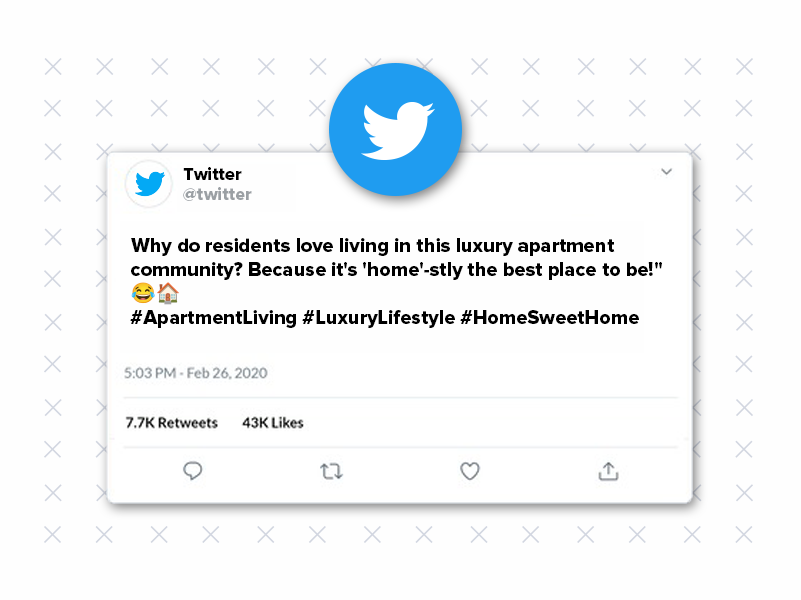
Humor can be an excellent tool for engaging your audience and creating a fun and friendly brand image. However, it is important to use humor sparingly and appropriately. Always consider your target audience and avoid offensive or insensitive content. Keep your humor light and relevant to your brand and community.
Rule #2: Don’t Be Afraid of Negativity
In the multifamily industry, negativity is plentiful online. Sometimes things don’t go as planned with your property, and you may receive a bad review online. Don’t worry. Instead, think about how you want to respond.
In almost every case, it’s the best strategy for companies to reply to these reviews and address the problem with a possible solution. What’s impressive about social media and the Internet in general is that you can talk one-on-one, so reach out to them. The reviewer’s negative experience may shed light on a more significant problem, which, once discovered, can be resolved so that higher-quality service can be experienced by all.
When potential residents surf the net for a place to live, they look at reviews. While bad reviews may affect their choices, properties engaging with reviews and offering solutions to the negativity will reassure them.
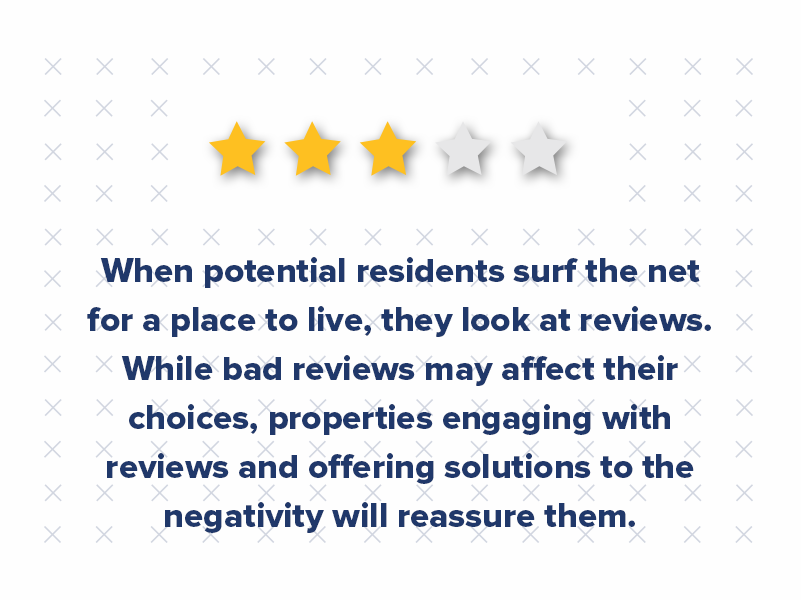
Rule #3: Use More Than One Brain
“Two brains are better than one” is not exclusively used for academic endeavors. One of our favorite social media accounts is Vogue’s Instagram account. They always have beautiful photos, and they’re not afraid to collaborate.
They’ve reposted photos and had budding artists take over their accounts, and they’ve done all this while sticking true to the core of their brand. For your multifamily marketing, you can collaborate with the community to showcase events, people, and issues that connect your property with your audience.
Collaboration is crucial when it comes to multifamily social media marketing. When creating content, property managers should work with the entire team to ensure that all aspects of the community are represented accurately. This may include input from the leasing agents, maintenance team, and residents.
Collaboration is also essential when managing social media accounts. Ensure you have a designated social media team responsible for managing and responding to social media inquiries and comments. Ensure that all team members are on the same page and understand the overall strategy for social media marketing.
Rule #4: Be Timely
Posting timely is a critical rule for social media marketing for multifamily apartments. Your content should be relevant and timely to your audience. For example, if there is an upcoming event in your community, post about it beforehand to encourage residents to attend. Also, consider current events and trending topics when creating content to stay relevant and connected with your audience.
Sometimes, we don’t do things on time. And that’s okay. However, with all social media, time is of the essence, so don’t be like that friend who tells you “Happy Birthday” a month late. If someone mentions you in a tweet, and you decide to favorite all mentions as a company, handle it immediately. More likely than not, it will make that person smile because getting some love from one of your favorite companies is always excellent.
Rule #5: Focus on Quality, Not Quantity
High-quality content is essential when it comes to social media for apartments. Your posts should be visually appealing, easy to read, and informative. Always use high-quality images and graphics to enhance your content. Ensure all posts are proofread and edited before posting to ensure the content is error-free and professional.
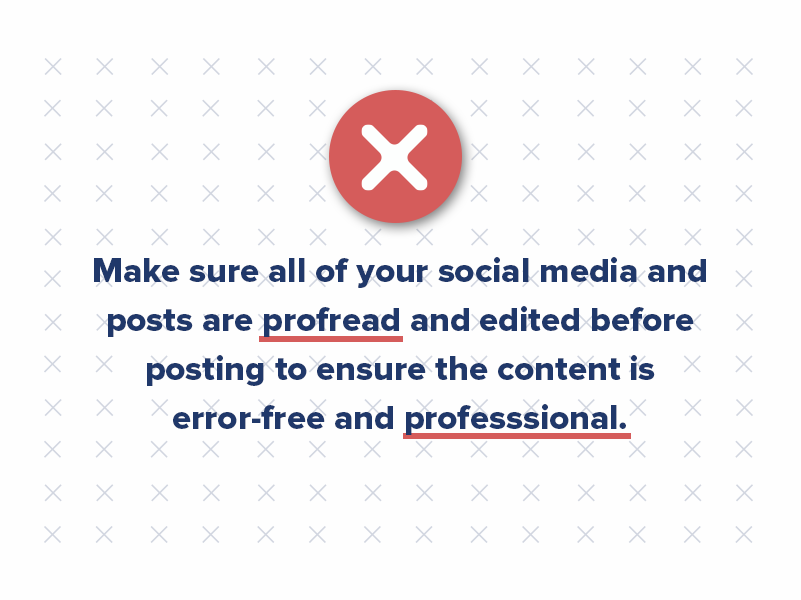
Rule #6: Respond to Residents
Social media for apartments is all about engagement, and it’s important to respond promptly to comments and messages. This helps build a positive relationship with your audience and demonstrates that you are attentive and responsive to their needs.
Remember to check your notifications (and message requests folder) regularly. Read, respond, and engage with your residents online daily. This shows them that you are not just a “posting machine” on social media but that you care about them.
Rule #7: Encourage User-Generated Content
Encouraging user-generated content is an excellent way to increase engagement on social media. Asking residents to share photos or stories about their experiences in your apartment community can create a sense of community and authenticity. Be sure to repost and share user-generated content to encourage further engagement.
Rule #8: Monitor Your Online Reputation
It’s essential to monitor your online reputation on social media. Be sure to respond to negative comments or reviews promptly and professionally, addressing any concerns or issues. This demonstrates that you take your residents’ feedback seriously and are committed to resolving any problems that may arise.
Rule #9: Be Consistent
Consistency is vital when it comes to your social media marketing. Be sure to post regularly and consistently to establish a routine and keep your audience engaged. Also, ensure that your multifamily brand messaging and visual style are consistent across all social media marketing platforms to create a cohesive apartment brand image.
By following these additional social media marketing interaction rules, property managers can create a strong and effective strategy that engages their audience and builds a positive multifamily brand image.

Is a Snapchat Marketing Strategy Right for Your Multifamily Property?
If you don’t use Snapchat, you’ve probably heard of it. It’s an app that allows you to share photos and videos with friends, but there’s a catch: within a few seconds of viewing the content, it disappears! Gone forever.
Seems a little silly, right? And yet, millions of people are using Snapchat.
In today’s digital age, social media has become an essential tool for businesses of all types, including multifamily properties. With many social media platforms available, choosing the right one can make all the difference in effectively marketing your multifamily property.
One platform that often gets overlooked is Snapchat. But is Snapchat still a relevant social media marketing tool for multifamily properties? And how can you effectively market your multifamily property on the right social media platforms?
Let’s dive in.
Is Snapchat Still Relevant for Multifamily Marketing?
When Snapchat first emerged, it was largely known as a platform for personal use, with its primary feature being ephemeral messaging. However, over the years, Snapchat has evolved into a powerful social media marketing tool, with features that allow businesses to connect effectively with their Snapchat target market.
As if you didn’t already know, Snapchat skews young. While Snapchat may not have the same user base as Instagram or TikTok, it still has an impressive number of users.
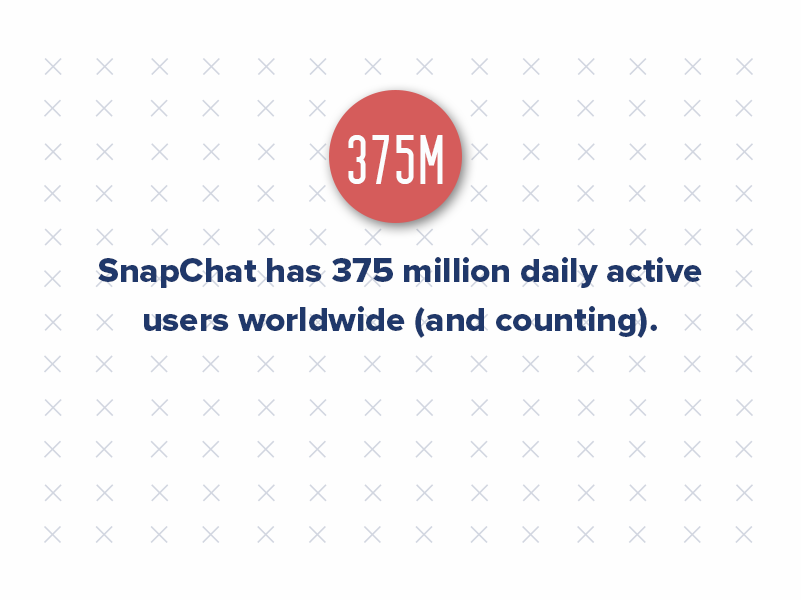
According to Demand Sage, Snapchat has 375 million daily active users worldwide as of March 2023. That is an 18.6% increase year over year. And the number of users is up from 265 million back in January 2021.
What’s more, Snapchat is particularly popular among younger demographics, with most users ages 18-24 using the platform.
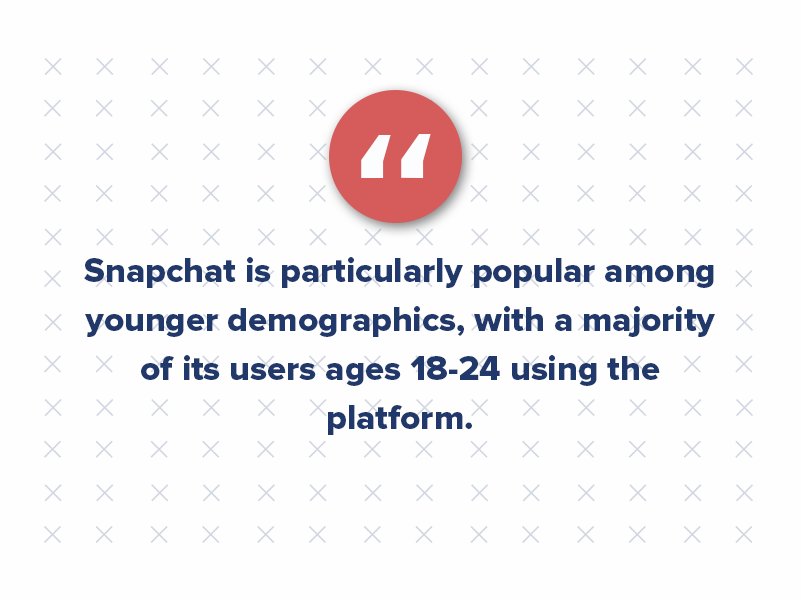
So, yes, this platform is still a relevant social media marketing tool for multifamily properties, especially if your Snapchat target market is a younger demographic.
(Pssst… If you are a student housing multifamily property, we highly recommend you jump on the Snapchat for marketing bandwagon!)
What’s the Value of Snapchat for Marketing Properties?
Although it seems counterintuitive, Snapchat content (photos and videos) is among the most engaging social media platforms. You probably wonder how disappearing content can be engaging, but that’s it! Viewing a “Snap” requires your undivided attention for a few seconds because if you don’t pay attention, you’ve missed the message (it’s gone).
Compare this to platforms like Facebook and Twitter, where we may passively “like” photos, doom-scroll our feed, or “save” articles with the best intentions of reading them later. But Snapchat is in the moment. It’s immediate, succinct, and convenient. And in return, Gen Z renters find it reasonable to invest a few precious seconds of their time.
It’s this disposability that makes Snapchat so unique. It’s the fleeting nature of Snapchat that drives such high user engagement.
Should You Hire a Snapchat Marketing Agency?
Do we recommend hiring a multifamily marketing agency for your Snapchat marketing strategy? Typically, we want to promote our multifamily marketing services, especially our work on social media for apartments. But we also pride ourselves in being transparent and good stewards of your marketing budget and time — so no, we recommend you keep your Snapchat marketing strategy in-house.
Why?
Snapchat is a highly personal platform. It’s not the platform where you share Stock images or promotional information about your property. This is the platform to offer behind-the-scenes content or promote things like resident events, local happenings, and funny anecdotes in your leasing office.
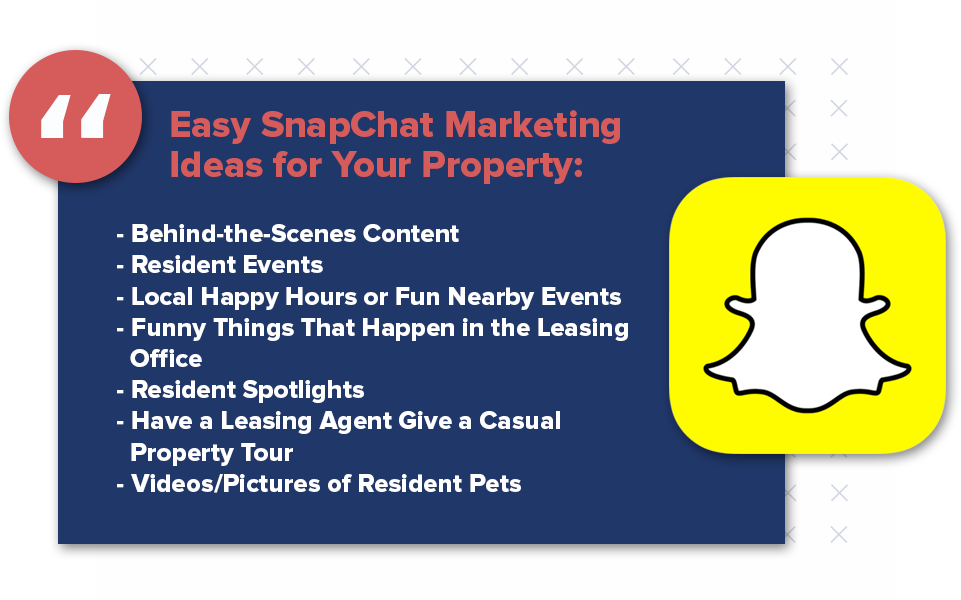
This is the type of platform you’ll want to hand over to your leasing agents and let them have some (professional and appropriate) fun with the platform! Let them use their creativity and share on Snapchat during downtime throughout the day. An agency will not be able to be at your property to share the type of personalized content your leasing agents will be able to. So leave platforms like Facebook, Instagram, and LinkedIn to your multifamily marketing agency and let your leasing team take the reigns on Snapchat!
How to Market on Snapchat (and Across Other Social Media Marketing Tools)
Now that we’ve established that Snapchat is still a relevant social media marketing tool for multifamily properties, here are some tips for marketing your property effectively on the right social media platforms.
1. Define Your Target Audience
Defining your target audience is essential before you start marketing your multifamily property on social media. Who are you trying to attract to your property? What are their interests, needs, and preferences? Once you clearly understand your target audience, you can choose the social media platforms that will be most effective in reaching them.
2. Choose the Right Social Media Marketing Tools
As mentioned earlier, numerous social media platforms are available, each with unique features and user base. Choosing the right social media platforms is essential to market your multifamily property effectively.
If your target audience is primarily younger demographics, then Snapchat, TikTok, Twitter, and Instagram may be the best platforms to focus on. On the other hand, if your target audience is more mature, platforms like Facebook and LinkedIn may be more effective.
>> Want some Instagram inspiration? Check out the Top Instagram Accounts for Multifamily!
3. Use High-Quality Visuals
Regardless of which social media platforms you choose, it is important to use high-quality visuals to showcase your property effectively. This includes professional photos and videos highlighting the property’s amenities, location, and overall vibe. On Snapchat, you can also use filters and lenses to create fun and engaging content that will appeal to your target audience. You can even create and sponsor your filter so nearby users can utilize it in their Snapchat photos.
4. Engage with Your Audience
Social media is all about engagement. To effectively market your multifamily property, it’s important to engage with your audience regularly. This includes responding to comments and messages, reposting user-generated content, and creating interactive content like polls and Q&A sessions.
With a unique platform like Snapchat, you will want to make sure you don’t have any missed Snapchat messages, photo tags, or mentions from your residents and prospects. Be sure to check your notifications and respond when applicable regularly.
5. Measure Your Success
Finally, it’s essential to measure the success of your social media marketing efforts regularly. This includes tracking engagement rates, follower growth, and website traffic. Regularly analyzing your social media metrics can refine your marketing strategy and optimize your efforts for maximum effectiveness.
Tap your Bitmoji/avatar in the top left-hand corner to find your Snapchat analytics data. This will take you to the home screen. Click the “Insights” tab to see your Snapchat analytics data.
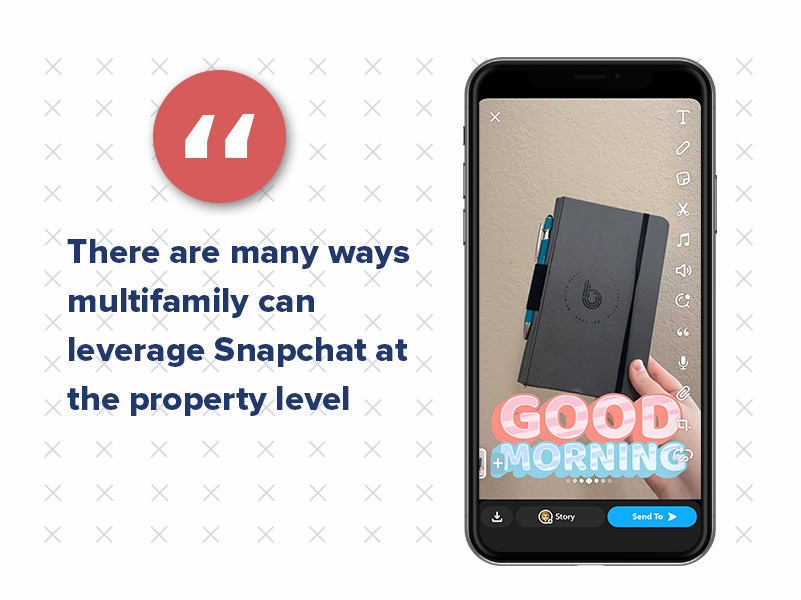
Opportunities for Multifamily Marketing on Snapchat
There are many ways multifamily can leverage Snapchat at the property level; let’s take a look:
- Direct snaps to and from residents: Once a property begins to connect with residents on Snapchat, they can send and receive ephemeral messages from one another. Likewise, sending quick and private messages to the management team can be a suitable medium. This feature is a fantastic way to empower your leasing office and the property staff to connect with residents. As the face of the property, these employees will be able to get to know residents uniquely.
- Geofilters: Geofilters allow users to create custom-branded artwork that will appear as an optional filter within the app in a specific geographic region. Users within that region can then add the geofilter to their messages and videos to friends. Aside from affordability, geofilters create an opportunity to reach and communicate with your residents within seconds. Properties should consider leveraging geofilters within their geographic area to take advantage of an event or holiday and target future residents.
- SnapStories: In addition to the traditional disappearing direct messages, Snapchat also includes a “story” feature that allows users to post public messages and videos that last for 24 hours. This allows property managers to create a story about their property and those living and working there. This can impact the way current and potential residents view your brand and, more importantly, how they view your property as a potential home.
Develop a Snapchat Marketing Strategy to Attract Residents
While Snapchat may not be as popular as Instagram or TikTok for marketing, it’s still a relevant social media marketing tool for multifamily properties, especially if your target audience is younger demographics.
The bottom line for apartment marketers: Snapchat is here. The multifamily industry has seen the rise and adoption of other burgeoning social media platforms, but why? because that’s where their renters are. That’s where their renters spend time, consume information, and interact. If you can’t speak Gen Z, it’s time to learn.
By defining your Snapchat target market, choosing the right platforms, using high-quality visuals, engaging with your audience, and measuring your success, you can effectively learn how to market on Snapchat to promote your multifamily property and attract new residents.
Who Should Be in Charge of Social Media for Apartments?
By now, we’ve established that social media is another platform for communication.
Renters want information anytime, anywhere, and they want it at their fingertips. Their need for information is instantaneous, and social media for apartments is the only marketing source to deliver that.
Residents are increasingly connecting with properties online throughout all phases of the renting process, from research to retention. As a result, property managers need to be able to do their jobs online, requiring them to have a certain amount of autonomy. Social media for apartments presents several opportunities for leasing, multifamily marketing, and building relationships. However, it also presents many risks.
A Balancing Act Between Corporate and Property-Level Marketing
Online word of mouth and one bad resident experience can taint an apartment brand. Property managers (not just corporate) must be present, helpful, and interactive on social media to read, respond, and act on any negative resident feedback.
It’s natural for corporate management to want complete control over their properties’ online activity, as doing so would limit risk and maintain consistent apartment brand messaging across all properties. However, this isn’t realistic.
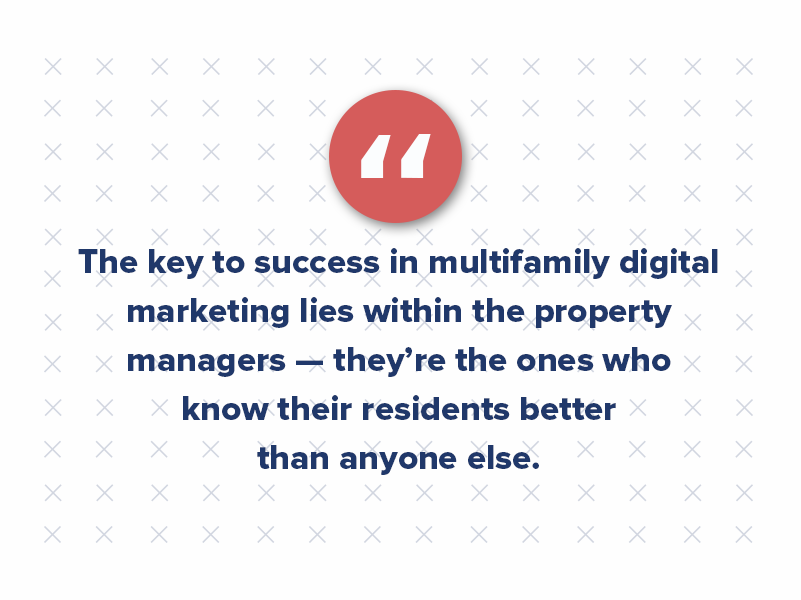
The key to success in multifamily digital marketing lies within the property managers — they’re the ones who know their residents better than anyone else. They live and work in the communities they serve, and they’re the ones interacting with residents daily.
So, how do we balance apartment brand consistency (corporate level) and local content/personalized service (property level)? The answer is quite simple. It just calls for a little training and education.
Corporate Responsibility: Training
Resident interactions on social media must be handled at the property level. Corporate management needs to take the necessary steps to train property managers. They need to provide resources (e.g., content guidelines, tone), that property managers can customize according to their residents. Employees should feel empowered to communicate on social media — that is corporate’s responsibility.

We recommend providing your properties with standard corporate messaging via a “Voice and Tone Guide” for social media and all content marketing, allowing each property to personalize its content.
Focus on keeping messaging simple and consistent. By providing guidelines for use, you can strengthen corporate apartment branding across all properties while allowing local social media to take the shape of its own at the property level.
The most important thing to remember is that corporate training should be ongoing. Organizations like the National Apartment Association (NAA) make that easy for corporate management to implement.
The NAA Education Institute offers the National Apartment Leasing Professional Program. The course includes six modules, which corporate management can license and provide for employees, either online or in the classroom. The curriculum includes everything from monitoring your online reputation to optimizing content for search engines.
Property Responsibility: Open Communication
Successful training requires an earnest effort from each property and its employees. Without their commitment, an effective digital marketing strategy is impossible to implement.
The property manager must consult their regional or national corporate representative anytime they have questions, feedback, or insight regarding social media use.
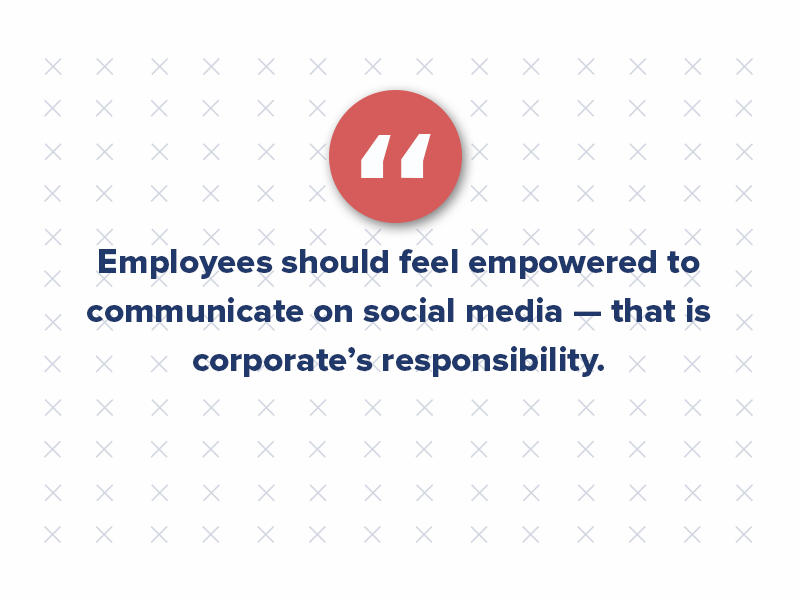
Corporate management should serve as a resource for properties and vice versa. Property managers should provide feedback on local apartment marketing efforts (What works, what doesn’t?). They should also be able to ask corporate representatives for help in unfamiliar situations and provide them with insights from their resident community.
Open communication is the key to balancing strong apartment brand messaging on social media with local personality and service.
Tying It All Together
To sum it up, here are some common threads in establishing multifamily brand development and character: A customer-centric approach is essential to the success of any multifamily digital marketing effort, whether that’s differentiating your property, meeting millennial expectations, designing your multifamily website, and so on. The most successful properties are capitalizing on the relationship-building attributes of social media for apartments and intercepting prospective renters in the places they’re already searching.
Technology is fast-changing the apartment marketing environment, and it’s up to you to respond or risk falling behind.
3 X (Twitter) Social Media Marketing Features You Should Already Be Using
As a multifamily property manager, staying on top of the latest X (formerly Twitter) marketing trends and social media platforms is important. X is one of the world’s most influential and widely used social networks, offering multifamily marketers an excellent opportunity to reach potential residents. From engaging with prospects to showcasing your properties, X marketing services can provide various benefits.

With X, engagement is directed toward a broader community: residents, local businesses, other properties, corporate management offices, the multifamily industry, etc. While Facebook is predominantly B2C (business to consumer), X’s social media marketing incorporates more B2B (business to business).
Understanding the basics of X
X is a social media platform that allows users to share short messages limited to 280 characters. Users range from individuals to major corporations, and they can follow or subscribe to each other’s updates.
Hashtags allow users to carry on conversations with larger groups, and X’s retweet feature enables messages to bridge networks of people quickly. You can also use trending hashtags related to current events or popular topics, which can help get more eyes on your posts and boost engagement levels.
X marketing lends well to news-like updates, quick conversations, and viral messages. Several multifamily properties have found their way onto X, and our X marketing agency is frequently asked for direction on its use.
What are the use cases for X?
- Important updates: While residents are one of many audiences on X, they’re still important. X is an excellent tool for sharing information updates, including upcoming resident events, inclement weather, or reminders about daylight savings time. Quick thoughts and well wishes (e.g., Happy holidays! Safe travels, everyone!) are also conducive to the platform.
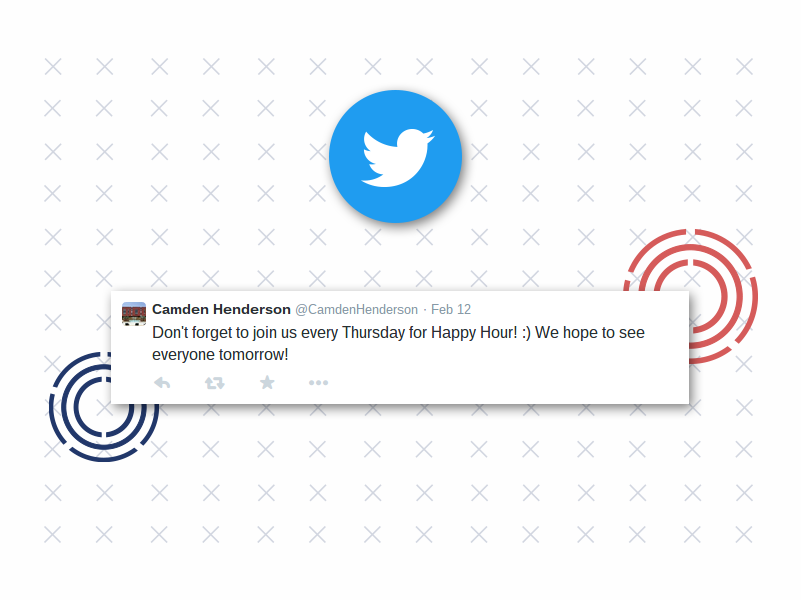
- Community engagement: Begin following and interacting with local businesses. Your multifamily property is part of a larger community, so being a good community member is essential. Support local events by spreading the word and sharing business specials when they’re relevant to your residents or your community. You’d be surprised how much support you’ll receive in return, both online and off.
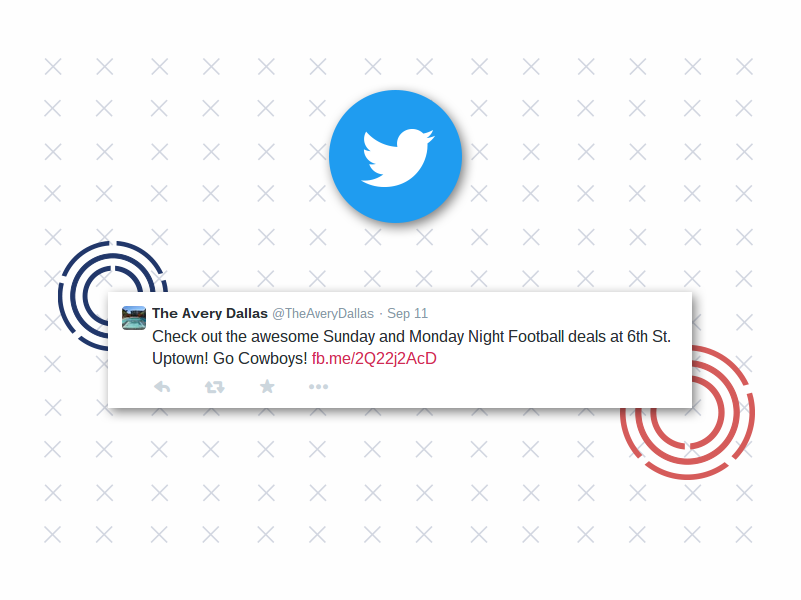
- Environmental scanning: X marketing is an excellent tool for monitoring conversations surrounding your property, city, and industry. What are people saying about your property? Banter the good and address the bad. It’s essential always to respond. Is someone searching for apartments in Uptown Dallas? Perhaps you could be the one to reach out and offer to answer any questions they have about the neighborhood. A simple keyword search allows you to keep an eye on conversations that might be relevant to you.
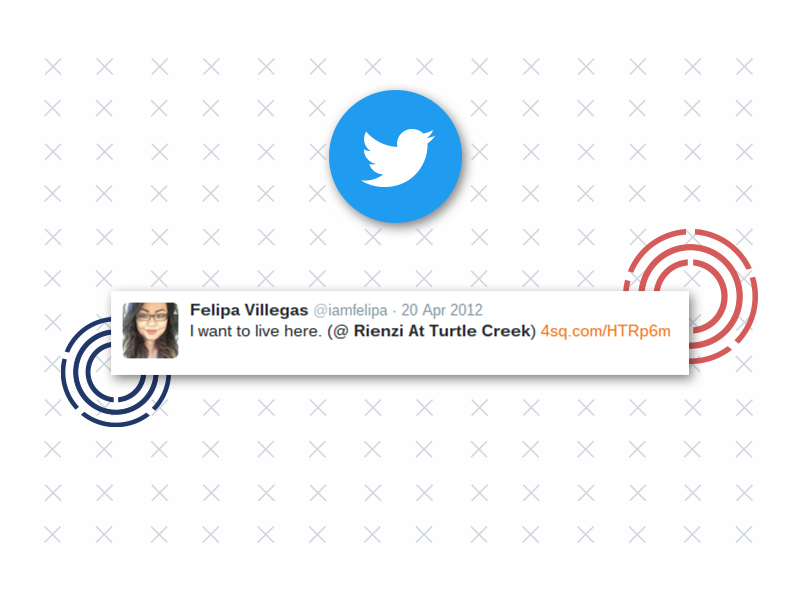
- Cross-platform promotion: X is a great way to spread the word about your actions on other platforms. If your property keeps a blog or if you’re holding a contest on Facebook or Instagram, X is an excellent platform for sharing links or sending out reminders.
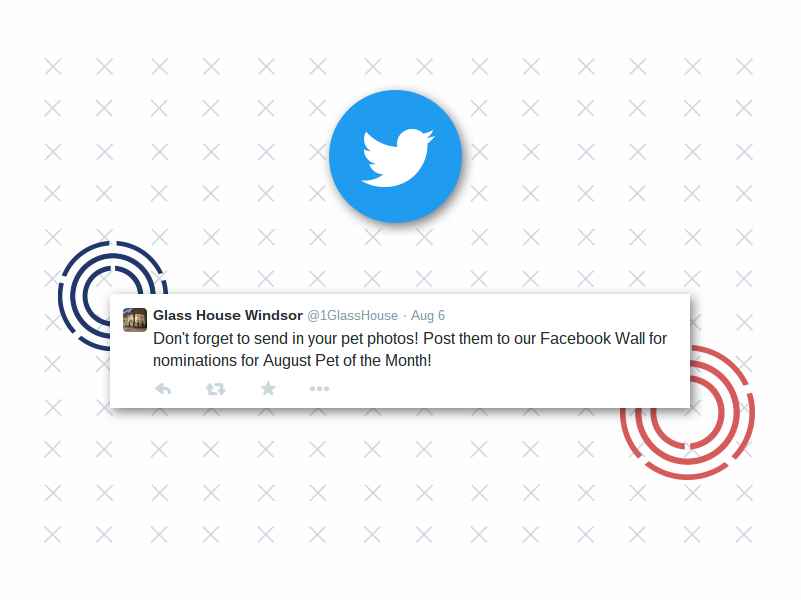
- Displaying your personality: When interacting on X, people should feel like they correspond with a person, not a business. Be friendly, be personable, and be neighborly. Remember that social media is a cocktail party, so take the time to get to know the other party members. The customer-centric approach pays off through relationships, the foundation for referrals, retention, and leasing. Trust us on this one.
- Lead generation: You can also use X’s targeted advertising features to reach new audiences interested in renting an apartment home at your property. With targeted ads, you can select specific demographic criteria such as age, location, gender, etc., which allows you to target specific users who are likely interested in renting from your property. This helps ensure that your ad spend is efficient and effective by focusing on users who are more likely to convert into leads or tenants for your property.
Don’t forget that social media activity improves your SEO (search engine optimization) — that is, the likelihood that your property will appear near the top of search engine rankings. This is important because it helps more people find your property.
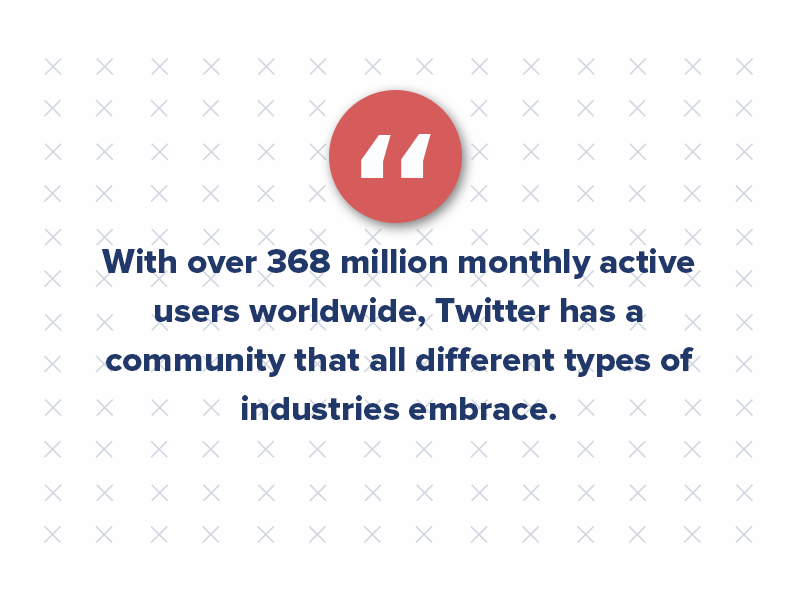
Who is using X?
X is an amazing place. With over 368 million monthly active users worldwide, X has an active community that all different types of people embrace.
Almost every type of industry has a community on X, including engineers, multifamily marketing professionals, fashion designers, lawyers, and even realtors. But how can these industries use X to their benefit and gain something positive out of a social network?
We’ve talked a lot about social media and how it benefits the multifamily market, but let’s talk about one specific thing that may interest realtors, developers, and everyone: Tweetchats.
What are the benefits of online chats?
Online chats have been around for years and are continually rising in popularity.
These online chats are scheduled, moderated conversations about a specific topic. Any X user is welcome to join any chat of their choice, but it’s a chance for users to connect with influencers and other uses and converse over similar interests. For instance, a chat about community fitness will probably bring groups of social runners and yoga lovers together to talk about health and wellness in community settings.
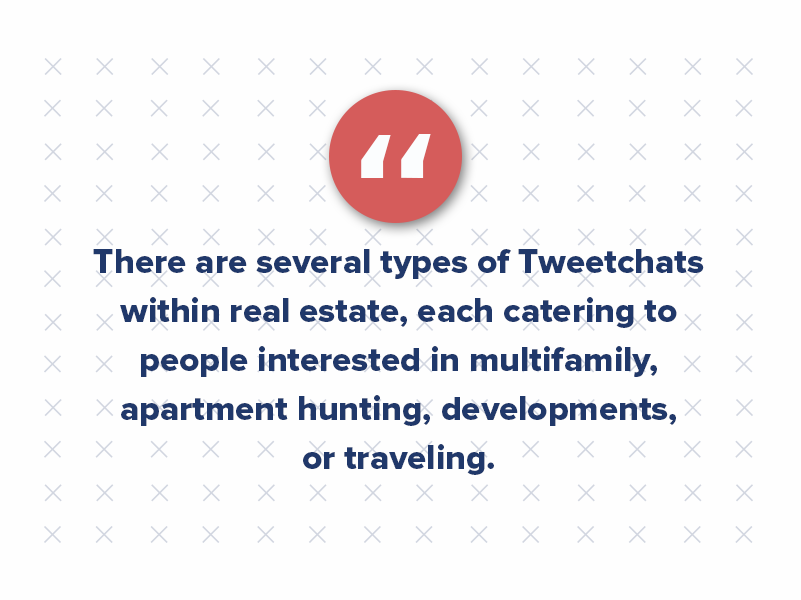
How to get involved
There are several types of chats within real estate, each catering to people interested in multifamily, apartment hunting, developments, or traveling. However, chats are scheduled at a certain time each week. Make sure to find out when exactly your chat is and add it to your calendar. There are a few websites out there that list almost every chat created and their time.
Questions & Answers
The format for a chat is fairly simple to understand: a moderator from a single X account usually tweets out questions for other users to respond to. Using the form “Q1” or “Q2”, moderators can let you know what question they’re on, and you reply to those questions with “A1”, “A2”, or whichever number corresponds to the question. This makes it easy for other participants to understand what everyone is responding to and ultimately helps everything stay organized.
Engage With Others
So you’re answering the questions, getting favorites on your tweets, and maybe a few replies. What do you do now? Engage with them! This is when you can interact with the rest of the community, reply to interesting answers you see, and favorite some tweets that catch your attention. Overall, it’s your chance to get your name out there, grow your following, and make some connections.
While you may think chats won’t help people in the industry, it’s still important to know that a social presence benefits all types of professionals. With the digital age constantly evolving, multifamily must stay on their toes; engaging with the community through social media is one way to stay up-to-date.
Beyond X: What are the latest features you should be using?
With countless tools and features at your disposal, it’s no wonder that many businesses are taking advantage of X’s social media marketing to boost their reach. So, what are some of the newest features? And how should your property be using them? Let’s take a look.
Threads
The thread feature allows you to create longer messages by connecting multiple tweets in one thread. This is great for sharing lengthy stories that would otherwise be too long for a single tweet. To do this, hit the “add another tweet” button when composing a tweet and start adding more content. You can also add images and videos to make your threads more engaging.
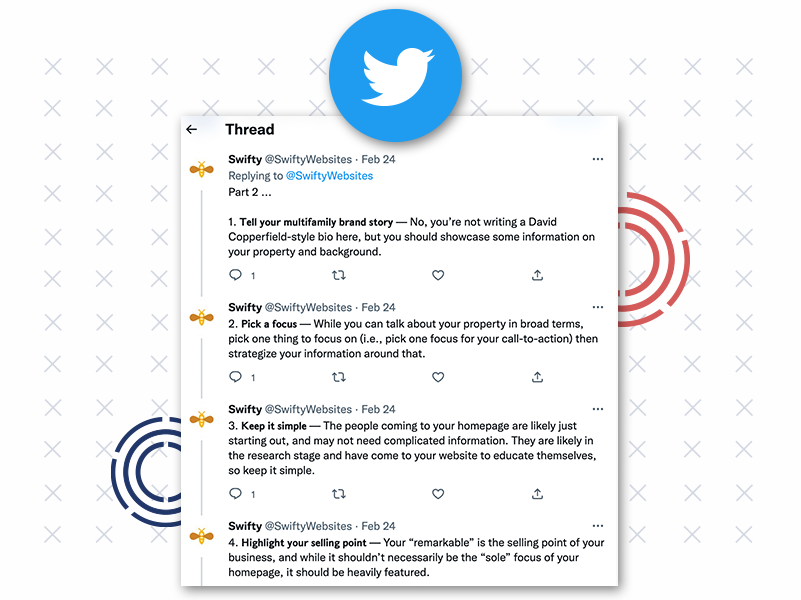
Polls
Polls allow you to gather feedback from followers quickly and easily without having to send surveys or contact people directly. You can ask simple questions with a few options for responses or complex ones with up to four answers each. This is a great way to get valuable insights into what potential renters may look for in an apartment complex or what amenities they prioritize if given a chance.
Moments
Moments are related tweets about noteworthy topics, such as events, trends, or announcements from around the world or within your community. They can be shared through links and hashtags and embedded on websites, making them highly visible and easy to access. This is an excellent opportunity to showcase some of the events at your property, like upcoming concerts or weekend activities, so you can reach new audiences who may not already be following you on X.
Add X to your multifamily marketing toolbox.
X marketing services is simply another tool in your multifamily marketing toolbox, and it has the power to foster relationships and positive word-of-mouth. With the ever-growing community on X, putting yourself out there and interacting with your residents is essential.
X social media marketing has endless possibilities for getting your message out there — but only if you know how to use its tools effectively. By taking advantage of new features, you can unlock powerful opportunities that will help get your property noticed by potential renters who may not have been aware of it.
The Secret to a Successful Multifamily Marketing Strategy: Influencer Marketing
Millennial and Gen Z renters no longer consider commercials or ads the major influence in their decision-making process. Many brands know this, using their marketing tactics to focus on influencer marketing to reach beyond the typical leasing billboard.
From reviews to thought leadership, social media for apartments offers a unique outlet to build fans as an influencer. Social media influencers in the real estate world are recognized for their large following and insights covering all aspects of the multifamily space.
A strong social presence is necessary to hold an influencer status in addition to quality posts. Turning to these influencers as a voice within the industry will result in valuable relationships that companies can leverage.
So who exactly are these valuable assets?
Social media influencers are users with a large following and are “influencing” the community. They are often viewed as a more trustworthy resource than advertisers, thus better capturing an audience.
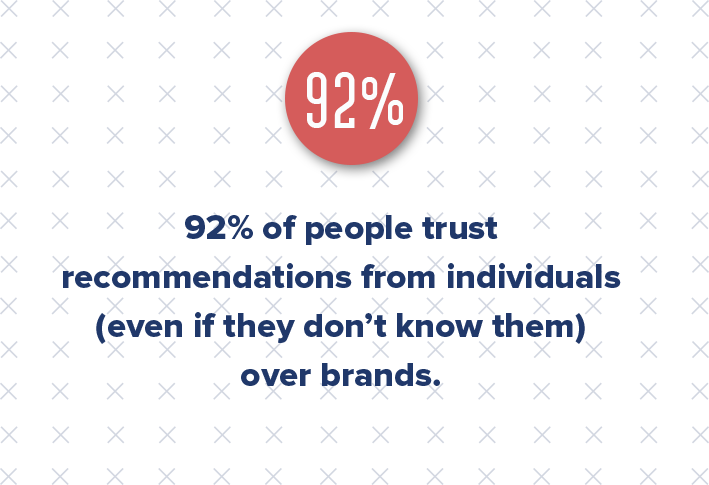
According to Nielsen, 92% of people trust recommendations from individuals (even if they don’t know them) over brands. It makes sense, right? Who sounds more reliable, a brand trying to sell you something or an individual just stating opinions?
Influencer marketing has become an increasingly important tool for businesses in recent years, and the multifamily industry is no exception. Influencers are social media users with a large and engaged following who can help to promote your brand or product. When done correctly, influencer marketing can be an extremely effective way to reach new prospects and generate apartment leads.
What does influencer marketing mean for multifamily?
As property managers take to more nontraditional methods for reeling in renters, social media influencers hold an interesting opportunity for multifamily. Influencer marketing is an indispensable asset as it allows a third party to promote your property.
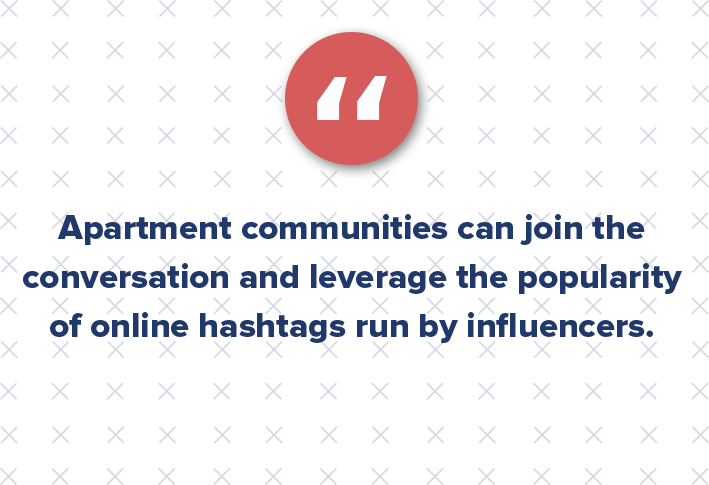
For instance, influencers have brought attention to properties through guest blogging and social promotion, like TweetChats. Most of them participate or host weekly Tweetchats, like #AptChat and #REOnline, where real estate professionals exchange ideas while networking. Apartment communities can join the conversation and leverage the popularity of online hashtags run by influencers.
Leveraging influencer marketing for your property
There are a few key things to remember when leveraging influencers for social media.
- First, it’s important to identify influencers who are a good fit for your multifamily brand and who have an audience that overlaps with your target market.
- Second, you’ll want to develop a clear strategy for working with influencers, including what type of content you’d like them to create and how you’ll promote it.
- Finally, ensure you measure the results of your influencer marketing campaign to continue improving your multifamily marketing strategy over time.
Connect and Engage With Influencers
Connecting with real estate professionals is the first step to becoming aware of how influencers can help your marketing. Engaging with these professionals in relevant topics will help develop a network that can be used to get involved with the community.
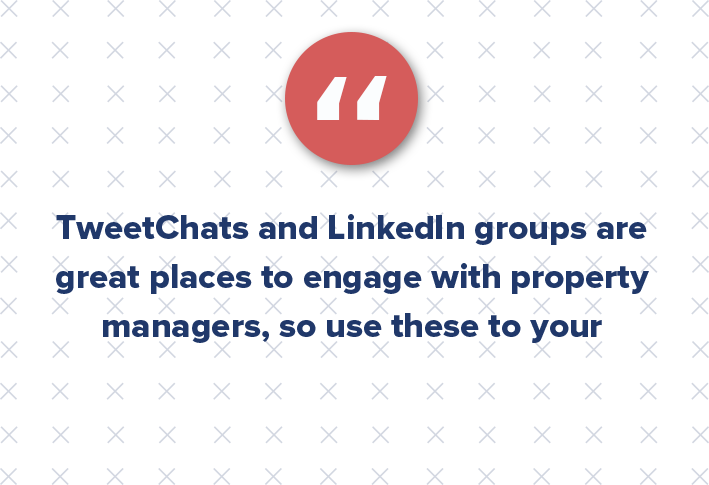
Twitter, Pinterest, and LinkedIn have a large commercial real estate community, so it’s important to know where to go to connect with the right professionals. TweetChats and LinkedIn groups are great places to engage with property managers, so use these to your advantage. As long as you’re getting your name out there, other professionals will start to see you as a reputable source.
Socialize With Quality
Focusing on sharing quality content is important to real estate influencers. Social media should be an outlet for property managers to be themselves and talk with other professionals. Sharing relevant content and using popular real estate hashtags will elevate your presence. Further, voicing opinions on certain trending topics will show a positive interest in building an active, involved community.
Boost Your Multifamily Marketing Efforts
Influencers are great marketing tools because they know the ins and outs of the industry. Connecting with these professionals allows property managers to market their property simply by becoming visible to their followers.
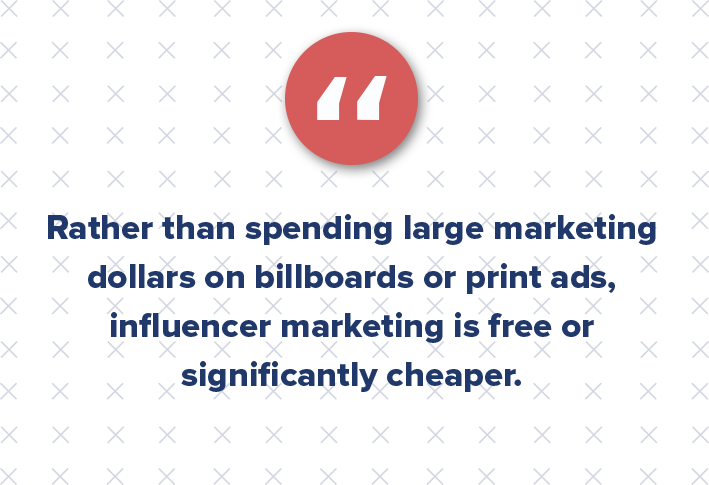
Rather than spending large marketing dollars on billboards or print ads, influencer marketing is free or significantly cheaper. Consider allowing one of these professionals to guest blog on your property’s site, for example. They can share your article with their followers, and you have more content to add. It’s a win-win!
By following these tips, you can maximize the impact of influencer marketing for your multifamily business.
Understanding the Relationship Between Multifamily SEO and Social Media
Did you know that multifamily SEO matters on social media?
More and more multifamily properties are hopping on social media, which serves as another channel for them to share and interact with renters and the community. But perhaps you don’t see the appeal of a social media presence?

Well, we’re here to give you another very important reason to be on social media, and that’s search engine optimization (SEO). Multifamily SEO is essentially the process of optimizing your content for search engines.
For most platforms (i.e., Instagram, Facebook, Twitter, Pinterest, and Tumblr, to name a few), there are a few simple steps you can take to move your multifamily property up in search engine rankings:
How do you optimize your social media profiles?
1. List Basic Information
All social media platforms have a place for users to list basic information: Company Name, Location, About Us, Address, etc. Make sure to fill out all the information sections on your profiles with specific keywords. The more information you share, the more chances you have to be indexed by Google. Besides, you want to make sure that anyone who comes across your property online knows exactly where it’s located and how to contact you.
2. Anticipate Popular Keywords
Brainstorm words or phrases that are relevant to your multifamily property. Perhaps it’s “lofts in downtown Dallas” or “Houston apartments with a dog park.” What is your property or multifamily business offering? What would your target audience search specifically? Use these keywords at a high density throughout your social media profiles and bios; include them in your social media captions when it’s natural to do so. You also might want to use them in hashtags (within the caption and not the comments) to get users on social media to find you more easily.
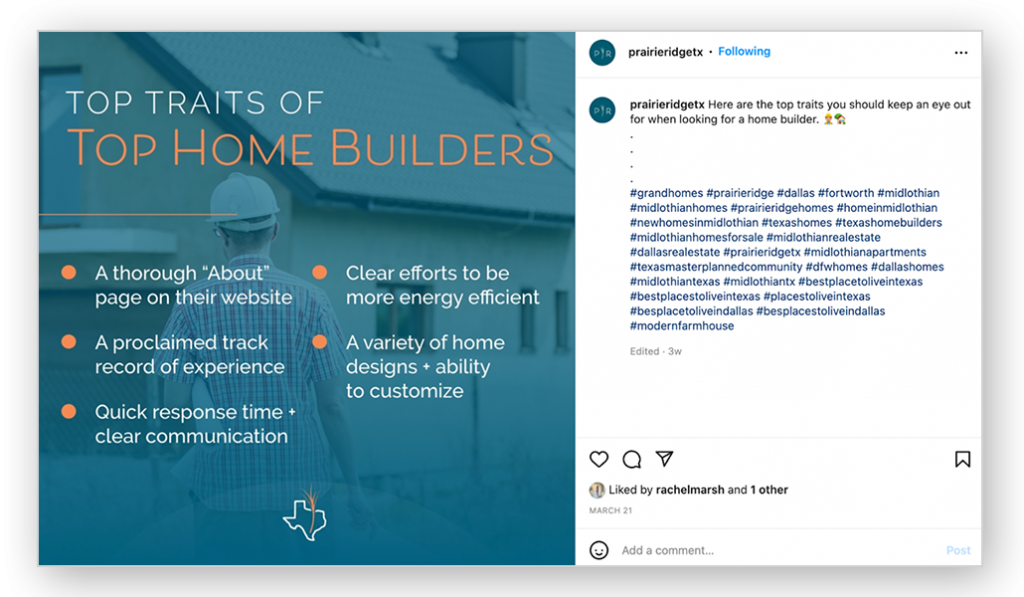
3. Invite Reviews
Display a section for reviews when possible. Facebook pages have a review section on the left side panel with 1-5 star ratings for the user to evaluate and post comments. It shows real people living in your multifamily property, providing real feedback. Again, it’s more opportunities to be indexed by search engines. This also allows you to publicly address any issues that your residents may be having, ultimately showing potential residents that you’re on top of handling problems.
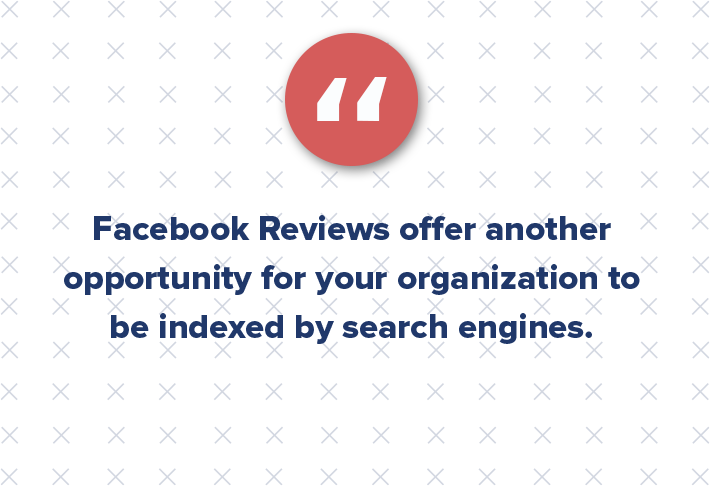
4. Link Often
Outbound links are one of the most important aspects to multifamily SEO, so be sure to link to other sources! In your use of social media, provide links to relevant blog articles and neighborhood events. Spread the word out about the great happenings going on around your neighborhood and property. Not only is it good for multifamily SEO, but “linking” is a great way to connect with people and businesses in your community.

5. Create Shareable Content
Inbound links are equally as important to SEO, yet you have to earn them. When people link back to your multifamily website or social media pages, it means you’re sharing content that is high quality, compelling, and helpful.
Some ideas include:
- Make and share a weekly newsletter with information about what’s going on at your property.
- Post interior design tips for small living spaces.
- Write about apartment decorating and storage hacks.
- Promote local events and happy hour specials in your community.
Creating shareable content starts with knowing your audience and what they would find interesting and resourceful.
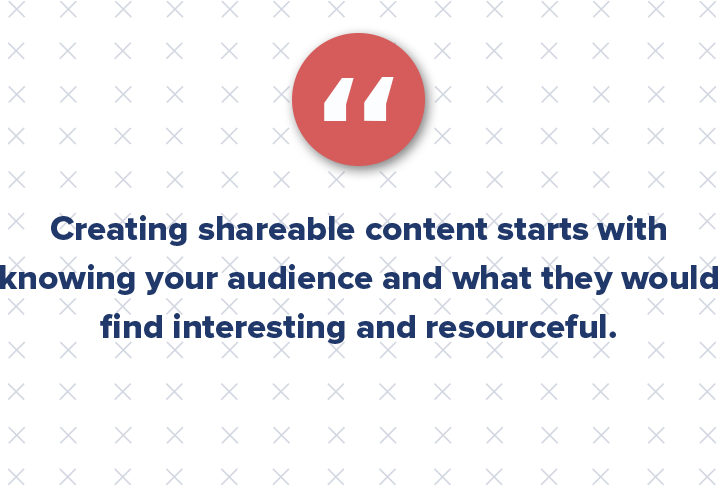
6. Utilize Multifamily PPC
While SEO is the organic approach to driving traffic, multifamily PPC is the paid. PPC ads display at the top or in the sidebar of search engine results. A successful multifamily PPC campaign combines your keyword research and your insights to design highly targeted ads that drive traffic to your website. It’s important to note that well-qualified traffic is the result of research and continued testing. Understanding your residents should be an ongoing learning process and the foundation of any SEO or PPC campaign (not to mention, all digital marketing).
7. Update Your Instagram Bio
Potential renters don’t just use Google to find new apartments, they use Instagram too. They go to the search bar on the explore page a type in “apartments in [city]” and maybe even include a descriptor such as “affordable” or “luxury.”
The way you give your property’s account the best chance of showing up in a related search is by adding keywords right into the “Name” of your profile’s bio. While the label for this section might make you assume you’re limited to just having your property’s name, there are actually no rules for this section. You can put whatever you want for your bio’s name. There’s also quite a bit of space you have to work with.
Here are some examples:
- Rio Villa Apartments | San Angelo, TX
- LVL 29 | Luxury Apartments in Plano
- Willow Creek | Affordable Apartments in Austin
- Prairie Pride | New Homes in Midlothian
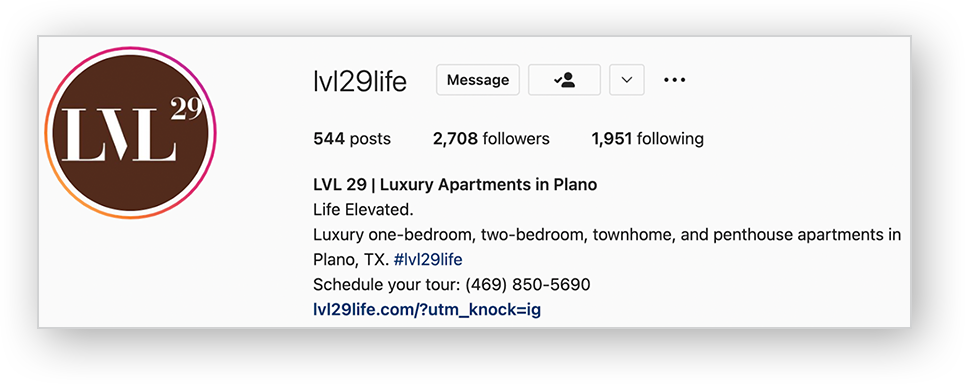
If you feel like your Instagram handle is enough to communicate the name of your property, you could even remove the name entirely and focus more on longer or multiple keywords.
Following these simple steps is a great way to improve your search engine ranking with the social media platforms you’re already using. It ultimately makes your content easier to find, allows you to connect with your audience, and helps you build the brand that you’re striving towards.

How Do You Measure Success in Social Media?
When it comes to proving the value of a digital multifamily marketing strategy, return on investment (ROI) is the keyword all executives want to hear. It may seem a simple enough request, but calculating social media ROI can get pretty tricky.
While social media ROI is definitely important, there’s a different way to think about ROI that’s critical for marketers; the foundation that a strong initial multifamily marketing strategy can provide for all future multifamily marketing endeavors.
While it may seem minimal compared to the numerical value that a multifamily marketing strategy can provide a company, it’s important to remember that the work done in an initial strategy can make or break any future marketing efforts.

Our 7+ Years of Multifamily Marketing Expertise in Your Inbox. Weekly.
Why Strategy Lays Important Groundwork
It’s easy to espouse demographic information about a brand. For example, most Oreos purchasers are parents between the ages of 24 and 39. But what does that information mean? This explains a core distinction between digital marketing strategy vs. traditional marketing efforts.
For traditional marketing, this information is simple enough for Nabisco to put out a commercial during daytime hours for stay-at-home parents that heavily features children enjoying Oreos.
For digital marketing, the approach is more complex. From this demographic information, what do we know about these parents? Where do they spend their time online? What does their buyer’s journey look like? What is a deciding factor in their purchase?
As Oreo is an established brand with years of name recognition under its belt, it’s unlikely that it would have to consider these factors to find marketing success seriously. For other companies entering the world of digital marketing, this information is “make or break.”
Knowing the important factors of your digital multifamily marketing strategy is important in your first campaign and campaigns developed down the road. Not addressing this information upfront could lead to catastrophe, forcing marketers to return to step one.

Stay Updated With New Multifamily Marketing Content
Multifamily Marketing By the Numbers
For multifamily marketers, content marketing can take time to show real results. That being said, it’s a long-term approach that improves your brand’s visibility online and helps you nurture stronger customer relationships.
While it can be difficult to assign a dollar value to marketing ROI or ROMI (Return on Marginal Investment), numbers are still important to the marketer, more focused on marketing and results than the value of the marketing.
Consider the following statistics to understand the value behind marketing beyond ROI further:
- Companies that blog 15 or more times per month see 5x more traffic than companies that don’t blog.
- 82% of businesses report actively using content marketing, up from 70% last year.
- Marketers with blogs receive 67% more leads than those who don’t.
- Marketers who prioritize blogs are 13x more likely to have a positive ROI.
- Video content is 50x more likely to drive web traffic than plain text.
- Using photos of real people rather than stock photography can result in a 35% conversion increase.
- Video was the primary form of marketing media created in 2021, followed by blogs (used by more than half of marketing teams), and infographics.
- Social engagement as a success metric was also on the rise, up 187% from 2020.
These statistics are developed from analyzing a widespread amount of marketing data and are incredibly important as marketers decide what tactics work well for their strategy. For example, knowing that blogging daily can have a large effect on the chances of customer acquisition is helpful. It may lead to a heavier blog focus in a group’s digital multifamily marketing strategy. But if persona research suggests that the key personas won’t read a blog, it might be wiser for the strategy to put less emphasis on blogging.
While marketing statistics don’t guarantee that a tactic will work for all marketers, they allow us to see important trends. Though innovation is important in multifamily marketing, it’s also vital that you’re not constantly seeking to reinvent the wheel. By utilizing trusted statistics, marketers can make educated decisions about the tactics to funnel their efforts.

How to Plan Your Next Inbound Campaign for More Renters
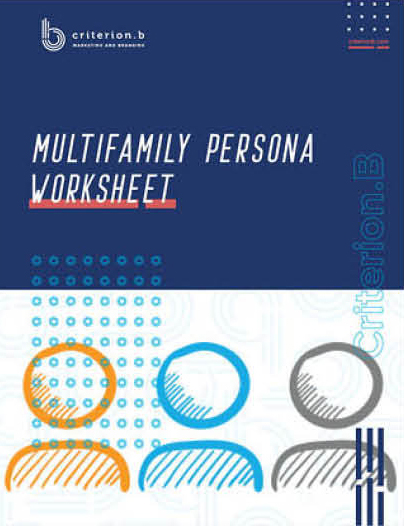
How Companies Are Rethinking the Value of Social Media
Social media reigns supreme in the marketing space, even above multifamily websites. Last year, a website was the No. 1 marketing channel for business. This year, social media is the top dog. In fact, it’s at an all-time high.
What does this mean for your multifamily organization? If you aren’t on social media in some capacity, you are already behind and missing out on qualified leads.
Did you know that 8 in 10 companies invested in social media marketing in 2021, and 39% plan to invest this year? Over the last year, companies had to rethink their strategies and some even hired customer experience officers to help lead the charge in this realm.

The Easiest Way to Determine Your Target Renter
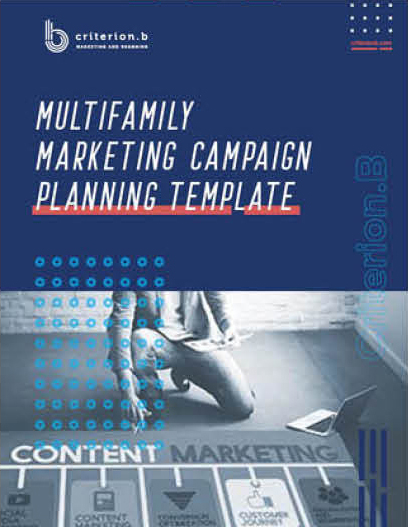
But how do you measure success on social media? Engagement metrics are helpful to track, but how does that translate to conversions and social media ROI? The primary tactic for social media marketing in 2021 was listening — something that will continue into 2022 and beyond.
The true value of social media lies in the relationships you make. By establishing relationships with your followers, you can learn how to engage with them, support them, and — most importantly — convert them into sales and loyal brand advocates.
While the most popular platform for marketers is Instagram, many teams are starting to see the most social media ROI and conversions from Facebook. This is likely due to Facebook’s robust advertising platform and ability to run lead-form ads. While listening to social media is critical to your marketing strategy, you can still achieve social media ROI with lead-form ads and an effective Facebook advertising strategy.
Assigning Value to Your Marketing Efforts
Assigning value to marketing efforts doesn’t have to be solely numerical. Instead, it’s important for marketers to understand that marketing strategy offers an important starting point to all future endeavors. A digital multifamily marketing strategy also offers social media ROI that is not necessarily easily measured but impactful.

3 Keys to Multifamily Branding That Attracts Renters
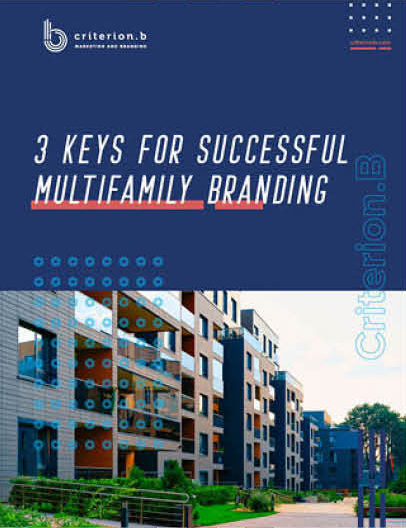
From Likes to Leases: Here’s What You Need to Be Doing on Instagram
Instagram marketing has become a powerful tool for multifamily businesses and properties to engage with their target audience, showcase their unique offerings, and build a strong sense of brand loyalty.
In the competitive commercial real estate market, successful Instagram accounts are those that understand the value of creative content, personalized experiences, and a genuine connection with their audience.

Let’s explore some of the top Instagram accounts for multifamily (in no particular order) and uncover the reasons behind their success:
1. LVL 29
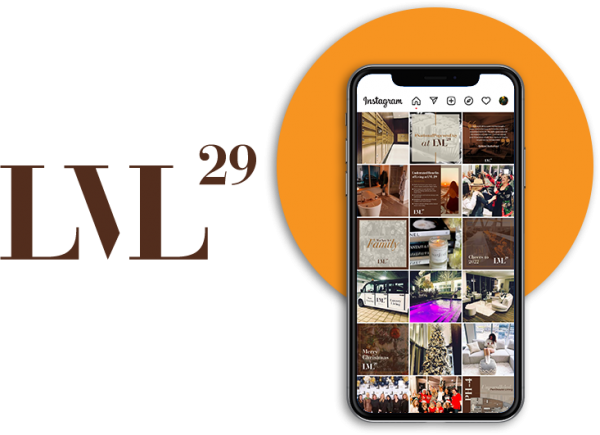
Located in West Plano, Texas, LVL 29 is a luxury apartment community that has harnessed the potential of Instagram to the fullest. Through captivating visuals, this Instagram showcases unit interiors, available floorplans, leasing specials, and unique community amenities. What sets LVL 29 apart is its consistent Instagram marketing strategy, fostering a growing following and encouraging residents to engage by tagging the property and resharing posts actively.
2. Discovery Park Apartments
Discovery Park Apartments in Denton, Texas, is another property that uses Instagram as a leasing tool. While the graphics are not ground-breaking or design-heavy, they are clean, eye-catching, and focus on showcasing the property’s interiors and amenities in a way that will engage potential renters.
3. 3700M
3700M is a luxury apartment complex located in West Village, Dallas that frequently uses its Instagram to highlight property staff. This Instagram marketing strategy allows both current and prospective renters to put a name to 3700M managers and employees. By personifying the property and showcasing the friendly faces that make up its resident community, 3700M humanizes the rental process and opens the line of communication for its resident community and future tenants.
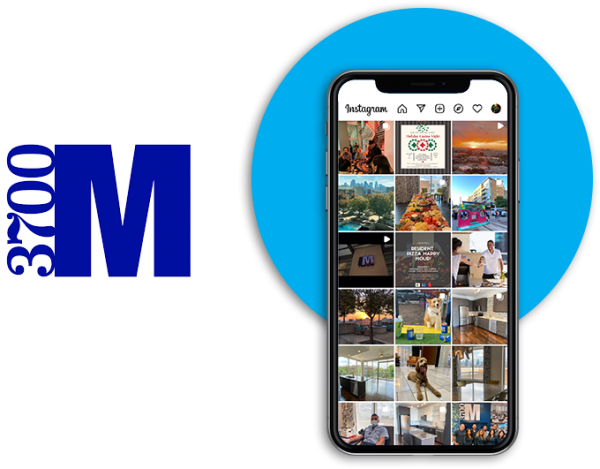
4. AvalonBay Communities
AvalonBay Communities, an equity REIT, also showcases its staff and company culture on Instagram. From posts about National Hiring Day to interviewing staff for Hispanic Heritage Month, AvalonBay publishes a variety of content to inspire its followers while uniquely personifying the company.
5. AMLI Residential
AMLI Residential is a property management company that has mastered the art of creativity on Instagram. The company showcases everything from new property photos to cute canine residents, but most importantly, they’re not afraid to get crafty. In one of many contests, AMLI encouraged residents to share their creative DIY projects. Their Instagram is worth a visit, as AMLI does a great job sharing photos that spark opportunities for resident engagement.
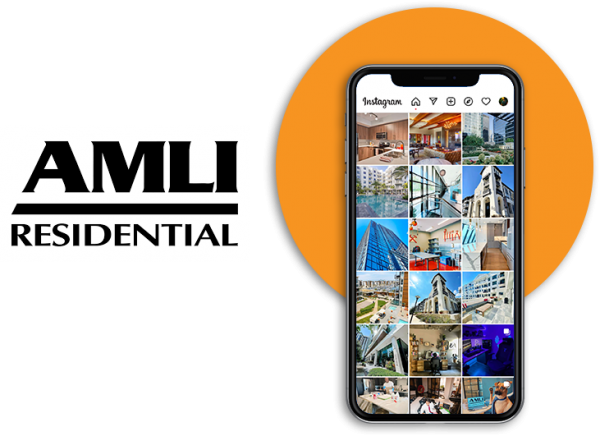
6. Century Apartments
Century Apartments is another property management company that has multifamily properties nationwide. They often use Instagram to promote upcoming resident activities at each of their properties and provide coverage of events being held. Not only does this approach encourage participation from current residents, but it allows prospective residents to get a sense of the personality of Century Apartment communities. They also share photos from various philanthropic events, which show how their properties are giving back to the community.
7. Prairie Ridge
Prairie Ridge, a master-planned community in Grand Prairie, Texas, maintains a cohesive Instagram feed aesthetic with an even mix of promoting the community’s available homes and floorplan options and upcoming events in nearby Midlothian, Texas.
Prairie Ridge also changes its content with the seasons to show prospects exactly what life can be like in their homes. For example, Prairie Ridge shifts to images of homes with Christmas trees and cookie decorating in winter. In the summer months, the community’s feed transforms into children playing in the sprinklers in the front yard and eating ice cream in the driveway.
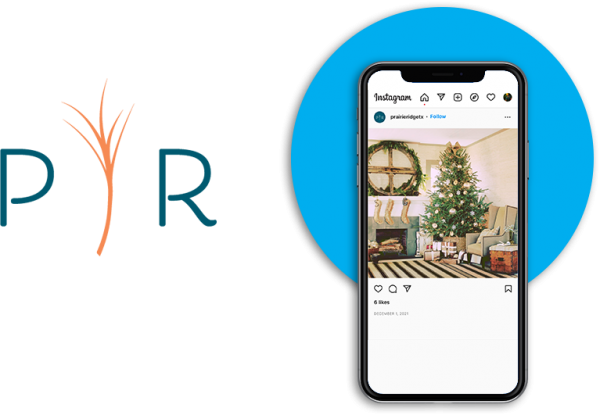
8. Anatole at City View
While Anatole at City View is located in the smaller town of Lubbock, Texas, the apartment community embraces its city and small-town charm on social media by focusing some of its Instagram posts to showcase nearby eateries.
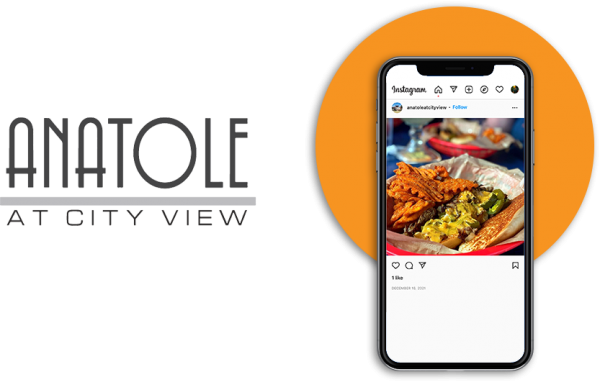
9. NE Property Management
With prime locations in Texas, Oklahoma, Colorado, and Wyoming, NE Property Management’s communities each showcase the incredible views that come with location, location, location. From relaxing pool views to breathtaking rooftop views, NE paints a picture of luxury at its properties. Each of its properties’ Instagram accounts is portrayed as if from the eye of a resident — one who loves their city and loves what their property location has to offer.
10. Winsted at White Rock
Your residents are the ones who make your community great, so why not focus on them? Winsted at White Rock in Dallas, Texas, celebrates the faces and personalities of the people who live there. Not only is this a great way to engage with current residents, but it also gives prospective residents an idea of the people who currently live in your community.
11. The Morris Apartments
The Morris Apartments in Nashville, Tenn., taps into influencer marketing regularly by having social media influencers “take over” their Instagram page for a day. For example, beauty influencer Leigh Taylor took over the page to share beauty tips and advice on the property’s Instagram Stories.
9 Strategies for Building an Engaging Social Media Presence
Success with Instagram marketing varies for every industry. For multifamily properties and businesses, some are finding success by highlighting residents, showcasing events, and being a part of the community.
Here are some ways to find success with your commercial real estate Instagram marketing strategy to help build your social media presence.
1. Adopt Instagram as a leasing tool.
Commercial real estate Instagram marketing is about more than just scheduling out some posts and letting it be. To take full advantage of your social media, you need to use it as another leasing tool. Your Instagram should inform, engage, and delight your residents — enough so that your prospects want to follow you and schedule a tour to learn more about your property.
2. Feature your world-class staff.
Showcasing your team and company culture can work wonders for your property’s image. By highlighting your staff members, you create a personal and approachable touch that resonates with both current and prospective renters.
Start by introducing the friendly faces behind your property. Let your Instagram be the stage where your team shines, allowing your audience to know the individuals who make your community thrive. This simple yet powerful strategy humanizes the rental process and fosters a stronger sense of community among residents.
Don’t be afraid to get creative with your content. From celebrating National Hiring Day to honoring Hispanic Heritage Month, take inspiration from your property’s unique culture and values. Share engaging posts that inspire your followers and paint a vivid picture of your company’s personality.
3. Get crafty. Hold a contest.
Mastering the art of creativity on Instagram can take your property’s social media game to the next level. Spotlight a wide range of content, from new property photos to heartwarming moments with cute canine residents. But don’t stop there — embrace your crafty side and think outside the box!
Consider holding engaging online contests. Encourage your residents to share their creative DIY projects, inspiring a sense of community and camaraderie among them. A contest like this boosts resident engagement and provides valuable user-generated content that you can share with your audience.
Remember, creativity knows no bounds on Instagram. Let your imagination run wild, and share posts that will captivate and inspire your followers. The more unique and inventive your content, the more your property will stand out in the crowded world of social media.
4. Highlight resident events.
As a property management company with multifamily properties nationwide, you have a wonderful opportunity to use Instagram to build a sense of community and showcase the unique personality of your properties. One effective way to do this is by promoting upcoming resident activities and events at each of your locations.
When you share coverage of these events on Instagram, you encourage participation from current residents and offer a glimpse into the vibrant and engaging atmosphere that your properties cultivate. Prospective residents will get a taste of the lively community they can be a part of, making them more likely to envision themselves living in your properties.
And don’t forget to showcase your properties’ philanthropic efforts. Sharing photos from various philanthropic events and initiatives demonstrates your commitment to giving back to the community. Prospective residents will appreciate your dedication to making a positive impact, and current residents will feel proud to be part of a community that contributes to a greater cause.
By fostering a sense of community and highlighting your properties’ charitable endeavors, you’ll strengthen your brand and create a lasting impression on your Instagram audience. Embrace the power of social media to showcase the heart and soul of your multifamily properties!

5. Change with the seasons.
Being helpful on social media is crucial for building strong connections with your audience. To make a lasting impression on your followers, consider adopting a cohesive Instagram feed aesthetic while also embracing seasonal changes.
Incorporate the spirit of each season into your content to resonate with your audience. During December, for instance, you can feature images of festive holiday decorations and heartwarming activities like cookie decorating. This allows your audience to envision the cozy and joyful atmosphere they could experience in their future homes.
As the summer months arrive, shift your focus to more outdoor-oriented content. Capture the excitement of children playing in the sprinklers or enjoying refreshing ice cream in the driveway. By showcasing these seasonal moments, you give prospects a genuine glimpse into the vibrant lifestyle they could enjoy within your community.
Embracing seasonal changes on your Instagram feed keeps your content fresh and engaging and creates a relatable and aspirational experience for your audience.
6. Embrace your city.
Regardless of your property’s location, you can leverage Instagram to embrace and celebrate the unique culture of your city. Focus on showcasing nearby eateries and local hotspots to create an authentic connection with your audience.
Expand your commercial real estate Instagram marketing strategy by posting content that supports local businesses, highlights upcoming events, and showcases nearby retail shops. Feature the best coffee shops in the area, inviting your followers to try their signature drinks and experience the local charm.
Celebrate what makes your location special, and your Instagram will become a powerful tool for fostering a sense of community and belonging among your audience.
7. Showcase your location.
If your multifamily properties boast prime locations with stunning views, leverage Instagram to showcase these picturesque scenes. Whether it’s breathtaking rooftop vistas or serene poolside landscapes, use your Instagram to paint a picture of the luxury and beauty that comes with “location, location, location.”
Take a resident’s perspective when curating your Instagram content, giving your audience a glimpse of what it’s like to wake up to such captivating views every day. Let the imagery speak for itself, evoking a sense of awe and appreciation for your property’s surroundings.
By sharing the allure of your location through Instagram, you create an emotional connection with your audience, instilling a desire to be a part of the community that offers such natural beauty and convenience. Highlighting the incredible views on your Instagram can be a powerful way to attract potential residents and leave a lasting impression on your current ones.
8. Celebrate your residents.
Your residents are the heart and soul of your community, so why not put them in the spotlight on Instagram? By showcasing the faces and personalities of the individuals who call your property home, you can create a sense of community and build a stronger connection with both current and potential residents.
Make your residents the stars of the show. This approach fosters engagement with current residents and provides prospective residents with a glimpse of the vibrant and diverse community they could become a part of.
Sharing stories, experiences, and testimonials from your residents can be a powerful way to humanize your property and demonstrate residents’ genuine sense of belonging. Use Instagram as a platform to showcase your residents’ unique personalities and stories, and you’ll create a more authentic and appealing presence that resonates with your target audience.
9. Utilize influencer Instagram marketing.
Social media offers a unique outlet to turn fans into influencers, particularly with commercial real estate Instagram marketing. Influencers are recognized by their large following and insights covering all aspects of your respective market. Often, influencers are viewed as a more trustworthy resource than advertisers, thus better capturing your audience.
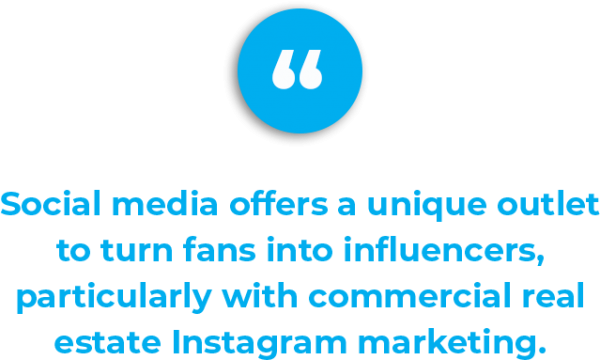
Connect with influencers who resonate with your property or multifamily business to make the most of this strategy. By partnering with them, you can effortlessly market your brand through their already established follower base. Consider inviting an influencer to a guest blog on your website or let them take over one of your Instagram channels for a day to encourage active engagement from your followers.
Whether it’s beauty influencers sharing makeup tips or lifestyle gurus showcasing their experiences at the property, this approach can spark genuine interest and build a sense of community among your audience. Embrace the power of influencers on Instagram, and you’ll find new and innovative ways to reach and engage your target audience.
Mastering the Art of Your Instagram Marketing Strategy
Take a page from these top Instagram accounts for multifamily apartments. When done properly, a successful Instagram marketing strategy can be a game-changer for properties and multifamily vendors. By adopting Instagram as a leasing tool and leveraging these insights to grow your account, you can enhance your online presence, drive meaningful engagement, and ultimately increase conversions. Set your multifamily business up for continued success in the digital age.



